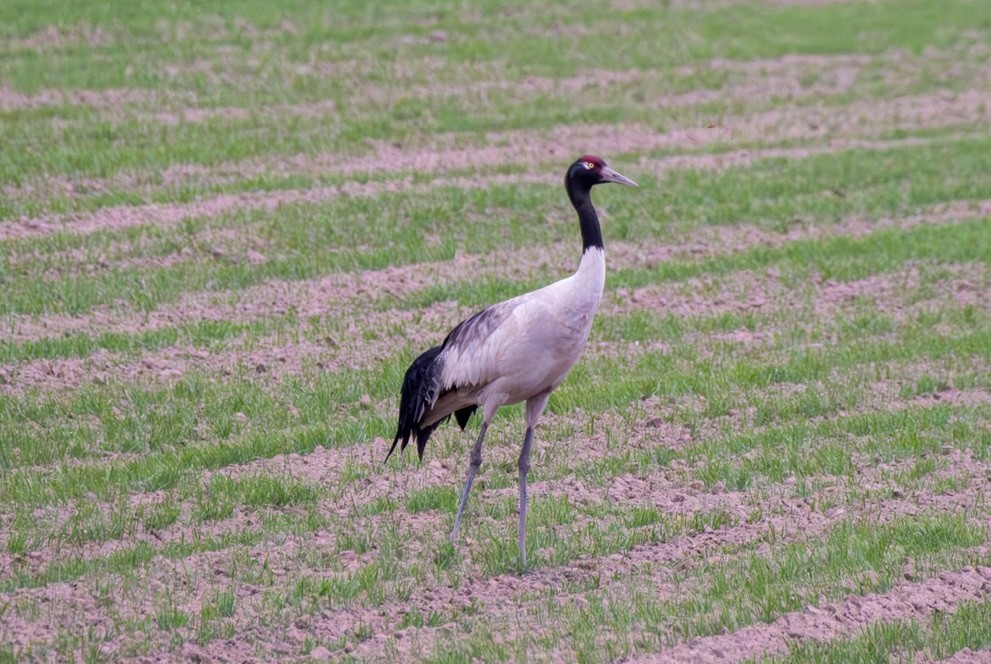
By Peter Hinow
Originally from Dresden, Germany, Peter Hinow is a mathematics professor at the University of Wisconsin in Milwaukee, Wisconsin, USA. One day, when left unsupervised at home, he toyed around with a 300 mm lens that his better half had bought as part of a camera package, and which had sat several years in its original box unused. It turns out, they can make distant objects appear closer!
No ten minutes of birding are wasted, especially if you are far away from your home turf. After finishing lunch and before driving onwards, I grabbed my camera in the tiny town of Molezhen and got to see a striking White-backed Thrush (Turdus kessleri). This species is endemic to the mountainous region that stretches from the northeastern edges of India and Bhutan to the Qinghai-Tibetan plateau. It must be very hardy, as it breeds in rocky sites at altitudes between 3600 and 4000 meters and even in winter only rarely descends below 2000 meters.
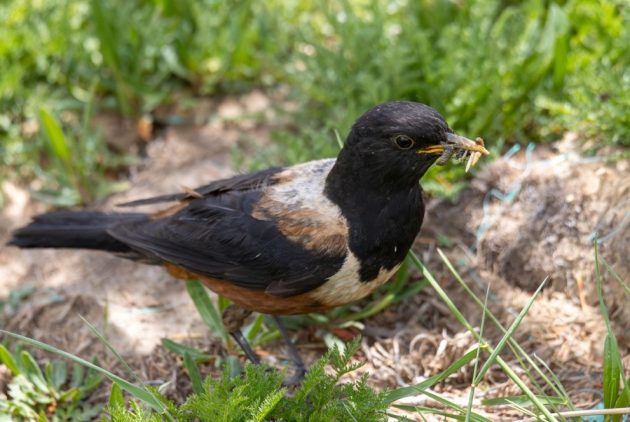
White-backed Thrush (Turdus kessleri) carrying food. Molezhen township, Qinghai.
Cranes are among the most stunning birds I have encountered on four continents. In the animal kingdom, their elegance and dignified behavior are matched by at most the penguins, if at all. It is no surprise that they have inspired countless poets and fine artists and that they hold a near mythical status in the Far East. In the endless landscape of Gansu, I had the pleasure to see a pair of Black-naped Cranes (Grus nigricollis) just a short distance off the road. If they could talk, I’m sure they would say “Guten Tag” in the mother tongue of the visitor.
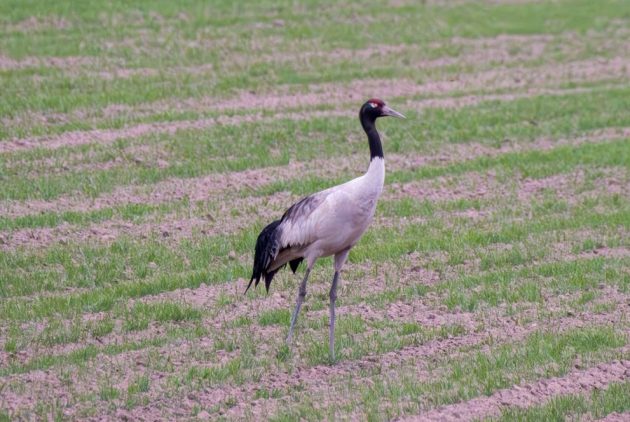
Black-naped Crane (Grus nigricollis) near Kazi Liang, Gansu.
After a rainy day spent on the grounds of the former Royal Military Horse farm, we continued our journey along the Silk Road and visited Mati Temple close to the city of Zhangye. There is a special spiritual force that directs temples and monasteries to mountains. Just think of the Rila Monastery (Bulgaria), Saqsayhuaman (Peru), and, well, nearly every famous temple in China. Mati is less famous than the goal of our journey, the Mogao Caves, but still worth a visit. Even if you are not a tall person (like me), watch your head as you crawl through an intricate network of stairs and tunnels leading to a sequence of shrines hewn into the rock. For the birder, this region is particularly interesting because of the mysterious Salim Ali’s Swift (Apus salimalii). The name honors the “Father of Indian Ornithology”, Salim Ali (1896-1987). The species was split off only recently from the Pacific Swift (A. pacificus), and likely it will be merged back into it in a few years. The latter, at least, is the opinion of a Chinese birder who has seen over 1100 species in the country.
Swifts being swifts, they are hard to photograph under the best of circumstances. Instead, I present a colorful Elliott’s Laughingthrush (Trochalopteron elliotii). I had seen it before two years ago on the summit of Mount Emei in Sichuan, but under very poor lightning conditions (think of 1/125 s). Good things will come to those who wait.
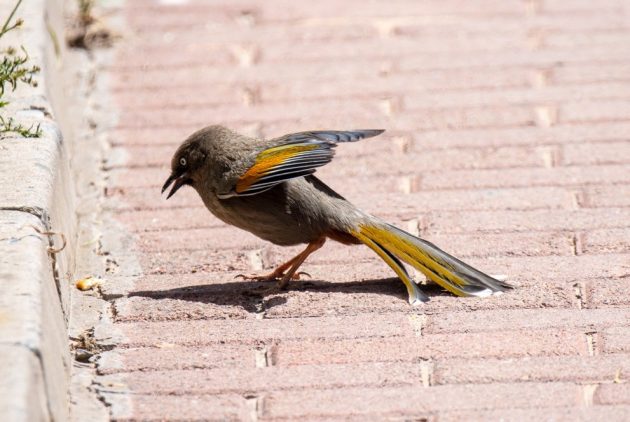
Elliott’s Laughingthrush (Trochalopteron elliotii), Mati Temple, Gansu.
The city of Zhangye is remarkable for the largest sleeping Buddha in China and for an amazing wetland park. Due to its sheer size, you are best off to rent a bicycle (assuming you’ve got Alipay) and to explore leisurely the various lakes, meadows, and reed beds. Merlin, whose sound recognition feature works much better in North America and Europe, was still able to identify the song of an Eastern Yellow Wagtail (Motacilla tschutschensis). With some patience, I managed to capture one a few minutes later. The scientific epithet is a German rendering of the Chukchi peninsula, where the Eurasian landmass almost touches North America, and from where Johann Friedrich Gmelin first described the species in the interesting year of 1789.
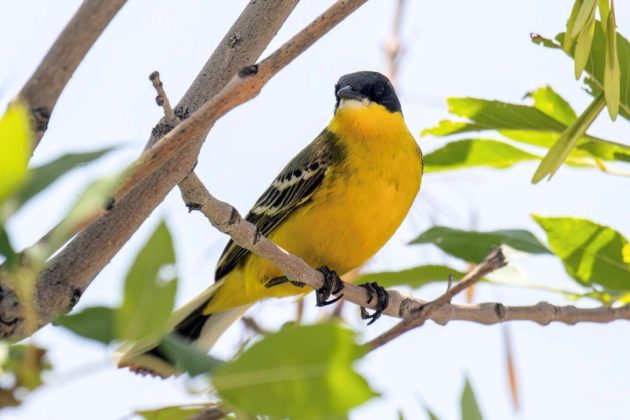
Eastern Yellow Wagtail (Motacilla tschutschensis), Zhangye National Wetland Park, Gansu. Posing as just “everybirdy” should.


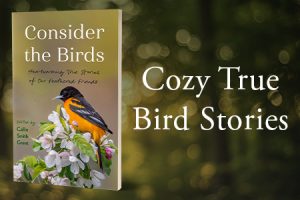

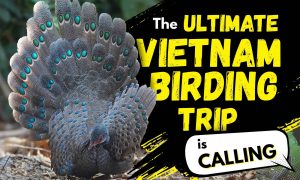
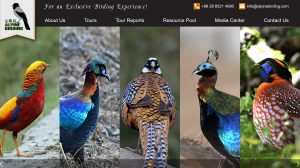
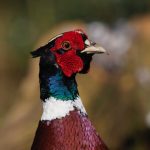
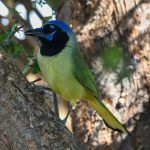
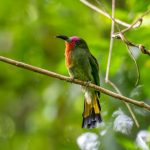

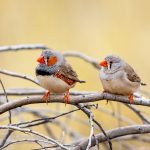
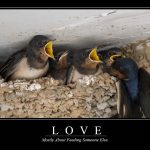

Leave a Comment